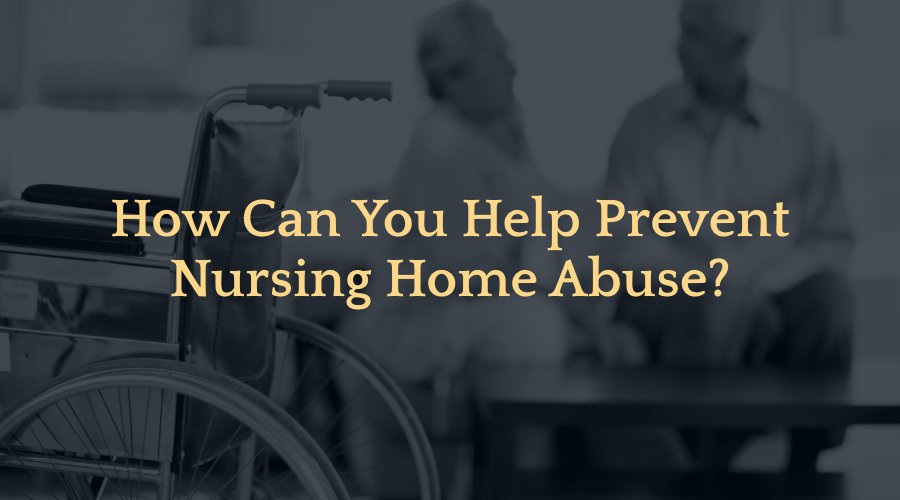
No recovery no fee
Nearly 1.4 million Americans reside in assisted living facilities, which are a cross between independent living and a nursing home. Residents need some help with the basics of life—bathing, eating, etc.—but remain mobile, aware, and healthy enough to otherwise fend for themselves. While ALF residents aren’t as vulnerable as nursing home residents, they are dependent on the ALF staff for some things.
Staff negligence and abuse often occurs and a Phoenix assisted living abuse lawyer is specialized to recognize the signs and help the victims. The somewhat better health of ALF residents can encourage some kinds of staff neglect, simply because:
Regardless of their intentions, if staff members don’t do their jobs properly, the residents can be harmed, sometimes severely.
Of course, when the residents chose to enter an assisted living facility, it was precisely to avoid the danger of these kinds of injuries and abuse. If you or a family member has been injured by the actions of an ALF, contact a Phoenix personal injury lawyer experienced in holding these facilities accountable under Arizona law.
As people age, they develop chronic health conditions, may have limited mobility, become more prone to falls, and may experience memory problems. When these issues begin posing a risk to a senior living alone, a nursing home or an assisted living center may be an option. Before you can choose what type of care facility is right for yourself or your elderly loved one, it helps to understand the differences between nursing homes and assisted living facilities.
Nursing home facilities provide full-time care for elderly residents with complex healthcare needs such as severe impairment to mobility, declining health conditions, or dementia. Nursing homes provide extensive 24-hour medical care, meal assistance, hygiene assistance, and safety features. Residents may live in either shared rooms or private rooms. Typical nursing homes also have communal living rooms, activity centers, and gardens.
Assisted living facilities are appropriate for seniors who maintain a degree of activity and independence, but require well-checks and some assistance with daily living. These facilities lack the hospital-like settings of nursing homes and function more like retirement communities but with the addition of healthcare support. Seniors enjoy community social activities, restaurant-style dining or in-room meal delivery, and options for apartment-style living or private rooms.
Residents in both nursing homes and assisted living facilities deserve appropriate care from a staff that treats them with dignity and respect. Family members put a great deal of trust in the facilities housing their elderly loved ones. Discovering that an elderly family member has suffered neglect or abuse can be devasting for the entire family as well as for the resident who has sustained injuries or a preventable decline in health.
What is most important in discussing neglect and abuse in the ALF setting is how many residents need assistance to perform basic tasks. According to the National Center for Assisted Living:
In understanding the damage that can flow from staff failures in living up to their responsibility, it can be useful to distinguish between neglect, in which the staff simply fails to do something it should have done, and negligence in the way that the staff performed when they did do things for which they are responsible. Examples of neglect include:
In addition to the many ways that ALF residents can be harmed by neglect and negligence, they may suffer various forms of abuse at the hands of the staff. The three main kinds of abuse are:
Employees, visitors, residents, or contractors can all perpetrate physical abuse. According to a study published by the National Center for Biotechnology Information (NCBI), older persons with dementia or other cognitive impairment are especially susceptible to abuse and neglect.
The Phoenix assisted living abuse lawyer at Knapp & Roberts will help you document signs of abuse, including:
Abuse of the elderly is a heinous offense. However, you are not alone, and we can assist you in holding those accountable. In certain instances, residents may suffer only mild consequences from neglect, which can be remedied by transferring them to a different facility.
However, victims of severe neglect or abuse at their assisted living home may require comprehensive medical evaluation and treatment for any physical or mental harm. This might result in expensive and continuous medical costs for seniors and their families.
Assisted living facilities know the abilities and needs of their residents and are responsible for protecting them from abuse and neglect. The liability of the ALF is often based on its selection and control of the staff entrusted with the care of vulnerable residents. Specifically, did the facility:
A significant part of monitoring includes monitoring the health of the residents. Neglect and abuse are most readily observable in the residents themselves: falls, fractures, bruises, malnutrition and other conditions indicate possible failings in care.
Residents at nursing homes and assisted living facilities face high risks of healthcare-associated infections (HAI), including deadly infections that develop after healthcare procedures. Studies show that the risks of these infections are higher in nursing homes and assisted living facilities than in hospitals and clinics, yet they house our most vulnerable citizens. Long-term care facilities in the United States experience 1-3 million infections in residents each year. Common infections in elder-care facilities include:
Since 2019, COVID-19 infections have also been common in nursing homes and assisted living facilities, contributing substantially to the total number of virus-related deaths during the first year of the pandemic.
Elderly residents experience frequent hospital stays. Once released back into a facility, they bring the antibiotic-resistant infections commonly found in hospitals with them. Because seniors are more prone to infection, these illnesses spread rapidly through eldercare facilities. The staff at nursing homes and assisted living centers have a responsibility to quickly identify and promptly address infections to minimize spread and provide prompt treatment to those infected.
Claims brought into court require proof through physical evidence, documentation, and the testimony of eyewitnesses and experts. The law also establishes which party bears the burden of proof in both criminal and civil cases. When your side bears the burden of proof in a case, you must present enough evidence to support your claim. Civil cases such as assisted living abuse claims require the party seeking compensation for damages (the plaintiff in court) to prove their claim through a preponderance of evidence—a less stringent standard than “beyond a reasonable doubt” required in criminal justice cases.
In assisted living abuse and neglect cases, the party seeking compensation must prove their allegations and demonstrate by a preponderance of evidence that the defendant caused the injury through negligence or wrongdoing. Once the evidence clearly shows this, the negligent party is liable for damages. The court refers to the consequences of a preventable injury as “damages,” and the negligent party is responsible for providing compensation for those damages through their liability insurance.
To meet the burden of proof in assisted living abuse cases, the party filing the claim must document evidence of liability, which means showing the following to be true:
In cases of egregious neglect or abuse causing the death of a resident, the claim becomes a wrongful death claim. Liable parties in assisted living facility neglect or abuse claims could be the facility itself, an independent contractor with privileges at the facility, or an individual employee.
Since the burden of proof lies with the injury victim in claims of assisted living facility neglect or abuse, it often takes an experienced attorney to investigate the claim. A skilled attorney will diligently investigate by doing the following:
Once your assisted living abuse attorney in Phoenix documents ample evidence of abuse or neglect, they can make a compelling case for compensation for damages. Most claims resolve through an out-of-court settlement when an attorney sends a demand package with evidence of liability. Only in cases of insurance companies that undervalue or unfairly deny a claim does the case proceed to court with a lawsuit. Lawsuits take longer to resolve than settlements, but court awards for damages are often larger than an out-of-court settlement amount.
When making a claim for damages in any injury case, the courts recognize two categories of damages, economic and non-economic damages. Economic damages are tangible and easy to calculate such as medical expenses and related costs. Non-economic damages are intangible and more difficult to assign a monetary number. Typically, an attorney uses a formula based on the cost of the victim’s medical care or an amount per day for non-economic damages like pain and suffering or emotional trauma.
Although non-economic damages aren’t as easy to calculate, they are often the most damaging to the victim. Compensation for these damages can’t erase pain and suffering but it provides a valuable sense of justice and helps relieve financial burdens on the individual and their family members.
Pursuing a claim against an assisted living facility requires prudent action. Under ARS 12-542, you have up to two years to file a claim. Otherwise, you may be left without legal options to get the compensation you deserve.
Our Phoenix assisted living abuse attorney at Knapp & Roberts has won awards that pay for:
No one should ever suffer at the hands of assisted living abuse. Contact our legal team for advice if you think your loved one is a victim. Knapp & Roberts will educate you on your legal rights and options while pursuing them on your behalf.

Our nation’s elderly citizens may require a degree of daily care but they deserve the dignity and respect they’ve earned during their years of life experience. When caretakers don’t diligently fulfill their duties to residents of nursing homes, assisted living facilities, and other elder care facilities, the residents may experience irreversible impacts on their health, safety, and emotional well-being. Understanding the below signs of neglect and abuse in nursing homes and assisted living residents can help ensure that elderly loved ones get the help they need and negligent facilities are held accountable:
You can help prevent elder abuse from occurring to your loved one by inquiring about staff hiring practices and training, employee turnover rates, and administrative oversight. Look for facilities with practices that minimize risks, such as the installation of monitoring systems, regular staff training, and facilities that encourage interactions with volunteers and social workers.
Frequently checking in on your loved one in an eldercare facility and watching interactions between them and staff members can help reveal potential problems. It’s important to immediately bring concerns to facility staff and other authorities.
If there are clear signs of neglect or abuse, report the situation to Adult Protective Services and your local nursing home ombudsman as well as the police.
A Phoenix nursing home abuse lawyer at Knapp & Roberts is experienced in neglect and abuse cases involving care facilities. We understand the laws in Arizona and represent our clients with the passion, dedication, and financial resources necessary to achieve the results you deserve. We only get paid if you win your case against the assisted living facility. Call us today and tell us what happened to you or your loved one.
The personal injury attorneys in Phoenix, Arizona, at Knapp & Roberts have the compassion and trial lawyer skills to tell your story to a jury. We will get to know you and your family so that we can help the jury understand what has happened to you and your family and how it has changed your lives. Obtain the compensation necessary for the injuries and losses you have suffered.